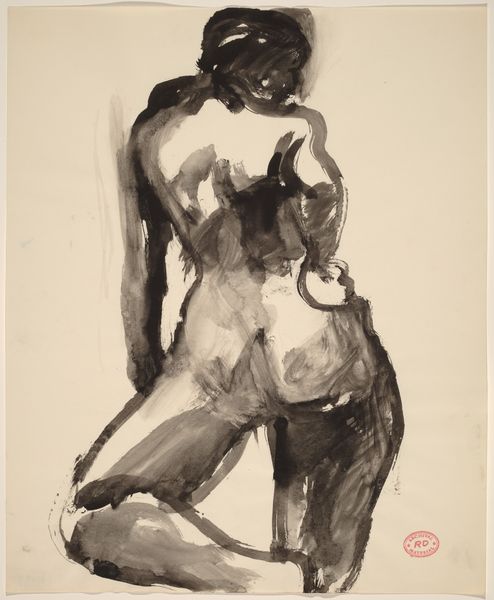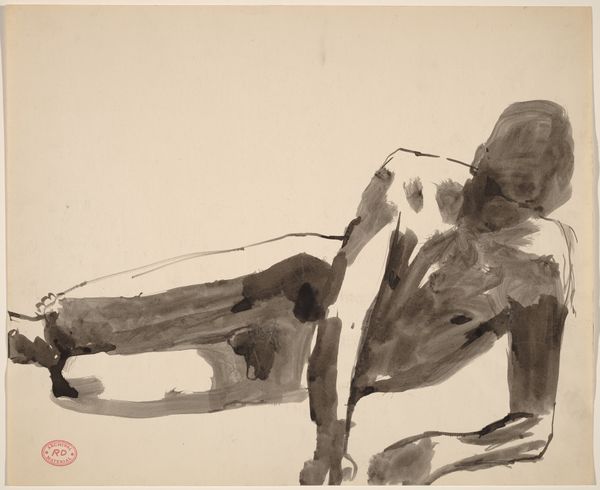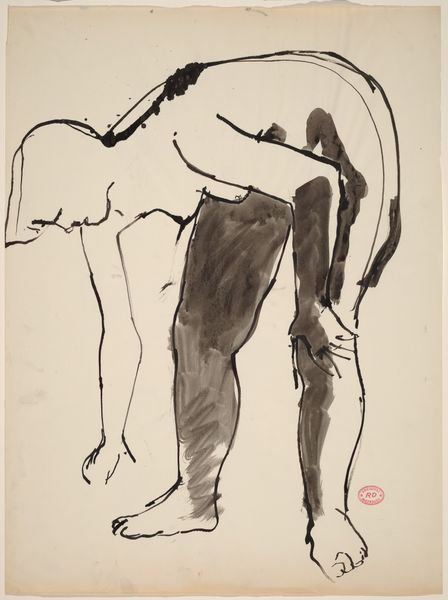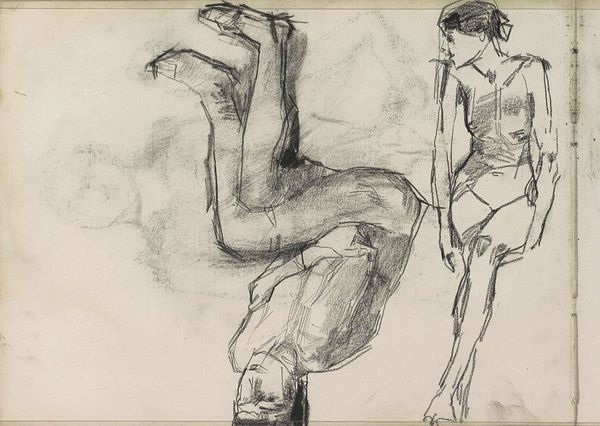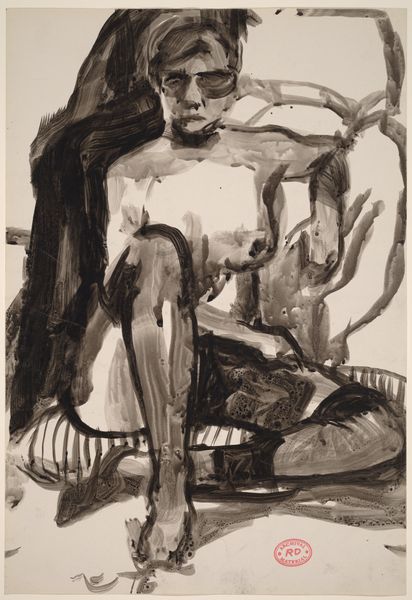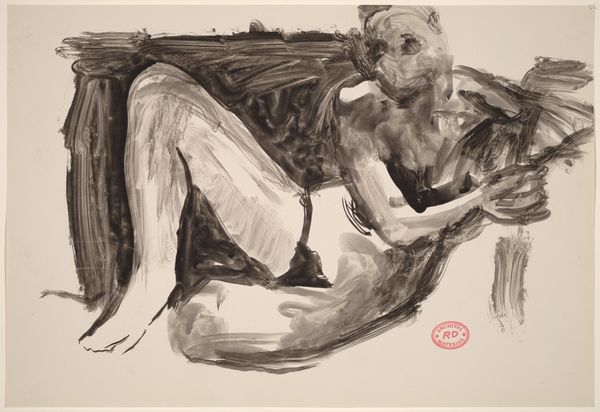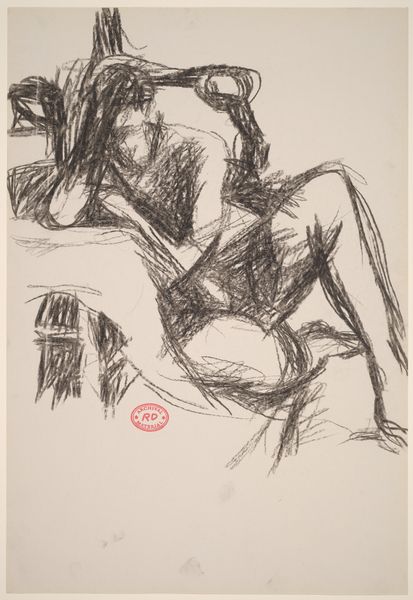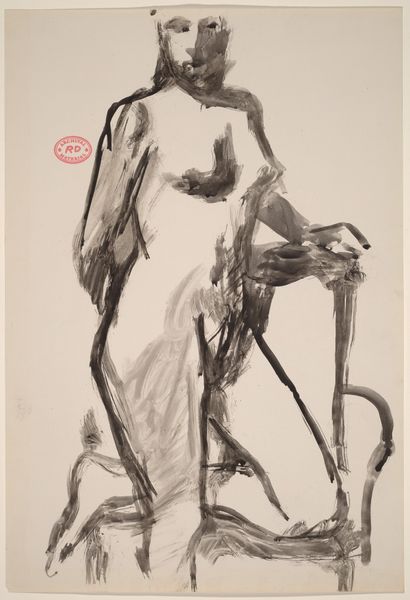
Dimensions: overall (approximate): 47.6 x 49.8 cm (18 3/4 x 19 5/8 in.)
Copyright: National Gallery of Art: CC0 1.0
Curator: Bernard Reder’s 1949 drawing, “Woman and Centaur,” immediately strikes me as ominous, with its stark black ink contrasting against the muted grey wash. What's your initial reaction? Editor: Ominous, yes, but also powerful. I see recurring motifs in Reder's work concerning creation, a very clear embrace of classical myths that are steeped in meaning related to the primal feminine, so while this is also disturbing, there's a familiar echo of creation myths. Curator: Myth indeed, and look at the technique – the frantic, expressive lines forming both figures. It appears that Reder embraced modernism in the context of both traditional drawing and contemporary sculptural work, evident in his exploration of figuration in bronze and other materials. He blurs the lines between drawing and sculpting here. Editor: Precisely. Consider the centaur itself: the classical form, half-human, half-animal, blending intellect with primal instinct. It's a potent symbol in Western art—Redor may have been using it here to explore psychological depths, or an engagement of social values regarding gender or primal self. It brings to mind earlier renderings in Picasso’s "Minotaur" suite. Curator: Speaking of societal implications, what are your thoughts on how this intertwining impacts representation of women and the male gaze, considering he likely made preparatory sketches out of this composition to eventually inform three-dimensional forms that were commonly rendered in bronze at the time? Editor: I believe that this specific image offers an ambiguous perspective: the composition may initially read with sexual undertones that objectify, but I notice that these images tend to empower female viewers while challenging accepted notions around control within these themes--I think there is evidence of psychological ambiguity embedded here. Curator: I concur. There is something captivating in this deliberate use of imagery. I have also noticed that, while Reder's bronze works garnered commercial recognition in comparison to these "simpler" ink drawings at the time, it is these earlier exploratory works that allow us a privileged glimpse at his larger creative process in its truest form. Editor: Absolutely, seeing how historical, literary, and psychological dimensions are all evoked in his work makes it something remarkable to think about today.
Comments
No comments
Be the first to comment and join the conversation on the ultimate creative platform.


